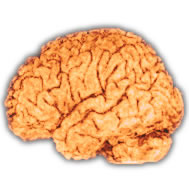Fresh light has been shed on the way in which we form new memories by UK scientists. 
The formation of memories requires changes to the connections between nerve cell or neurons. So called "episodic memories", which are those that are formed after an event or experience, tend to be stored in the part of the brain called the medial temporal lobe. It is already known that neurons in this area respond to related concepts, such as two actors in the same television series. But what scientists didn't know was how fast these links are learned, or what physically underpins the learning of a new memory.
Now, University of Leicester scientist Dr Matias Ison and colleagues studied human patients who were already undergoing investigations for epilepsy, which necessitated the insertion of electrodes into their brains. The patients were shown a sequence of images of famous actors and places, while the activity of their brain cells were simultaneously recorded using the electrodes.
Initially, pictures of a specific actor or place caused only single neurons to respond - the "Jennifer Aniston neuron", or White House neuron and so on, as Ison dubbs them.
But if a composite image containing both stimuli, for example Jennifer Aniston at the White House, is shown to the patient, this predictably triggers both the Jennifer Aniston and White House neurons to respond. And, if a picture just showing Jennifer Aniston is viewed by the patient, the White House neuron also responds, and vice versa. The patient has learned to associate the White House with Jennifer Aniston.
Previous investigations have been restricted to the study of multiple neurons and mostly using animals. This creates a lot of limitations. Perhaps most importantly, as Ison said, "Animals are not very good at telling you who was in a particular place - if it was Clint Eastwood or Julia Roberts".
Significantly, this study enabled the scientists to pinpoint the change in the brain when the new association was formed. This was traced back to a single neuron changing "at the exact moment at which learning occurs, even after a single presentation", according to Ison. This is a significant clue as to what happens during the formation of a memory, because in real life, events only happen once.
However this study only looked at short term effects, while we form the memory itself. An interesting further investigation would be to look at what happens when we forget something - do the neurons change back?
Ison explained that in the long term this result is significant as it will enable us to "improve cognitive deficits in patients that suffer from neurological diseases."
- Previous Pits point to caves inside comet
- Next Turtle Fossil "Missing Link"










Comments
Add a comment